Russian PSO-1 sniper scope Прицел снайперский оптический ПСО-1
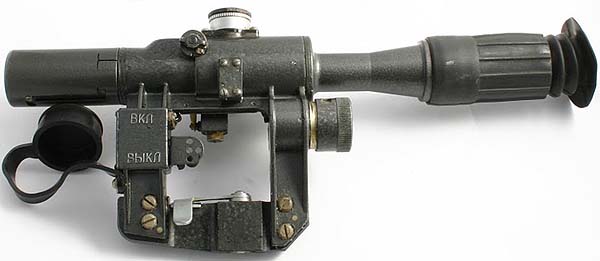
|
PSO-1 Specifications | ||
| Magnification power | 4x | |
| Field of view | 6° | |
| Exit pupil diameter | 0.23 inches | |
| Eye relief | 2.68 inches | |
| Resolution limit | 12°/second | |
| Length with eye cover | 14.75 inches | |
| Weight | 1.28 lbs | |
The PSO-1 (прицел снайперский оптический = sight sniper optical) was developed in 1963 specifically for the SVD sniper rifle. It has 4 power magnification with a 24mm objective lens diameter and 32mm occular lens diameter. This means what you see at 25 yards with the naked eye will appear the same size at 100 yards through this scope. The exit pupil measurement is 6mm (24\4=6). To clearly see a target in normal sunlight the human eye only needs 4mm of light transfer through a scope, so this scope's 6mm exit pupil will be sufficiently bright for good weather daylight operations.
The main advantage of this scope design is it allows the sniper to aim at a target and calculate the distance to the target at the same time. It also allows for horizontal and verticle hold over using the reticle markings, all while never taking time to turn the adjustment knobs. This allows very quick and precise shooting, especially at target that are moving. The reticle is also illuminated for shooting at dusk or in very dark conditions.
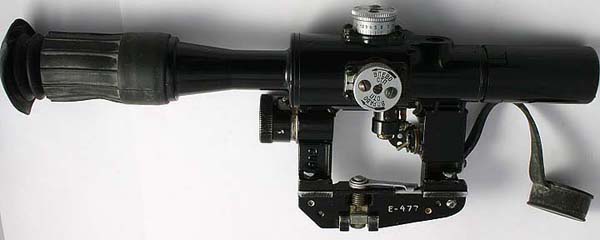
These scopes were manufactured at either NPZ Novosibirsk Instrument-Making Plant (Новосибирский приборостроительный завод) or Izhevsk during the early years of production The NPZ scopes were painted black until 1970 when the factory switched to the "grey hammer" finish.
The rubber eyecup has an optimal length which facilitates the correct position of the eye behind the scope. In addition, the eyecup does not allow light glare to appear on the ocular lenses that would distract and disorient the shooter's aim.
Another very advanced feature when this scope was introduced was the built-in infrared detection screen. After charging the IR filter for 20 minutes the screen was good for about 48 hours of use. This feature allowed the sniper to detect targets that used night vision devices powered by IR illumination. According to optics expert "Tantal" the IR detector was dropped from production scopes in 1992 even though its usefulness in combat would have been dubious much past the mid 1970s.

The IR element is charged by exposing it to the sun through the round window on the top of the scope.
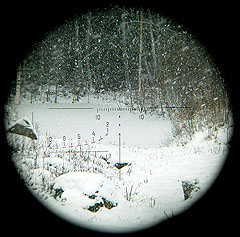

Rotate the circular IR switch to make the IR detector screen flip down over the
image in the scope. If there were an enemy using an IR illuminator on
their night vision optics it would show in the PSO-1 scope as a glowing
blob of light. This can be tested by aiming a TV remote control at the
scope or a video camera with night vision activated.
The PSO-1 can be easily removed and reattached to the rifle without losing its zero by releasing tension on the locking arm and sliding the scope to the rear of the receiver.

The newer PSO-1M2 variation is the standard scope for the SVD sniper rifle.
NPZ PSO scopes with illuminated reticles are made from magnesium alloy and come with fully multicoated optics. Considered the higher end of military side mount scopes, the quality is claimed to be higher than POSP scopes, mostly because of the higher quality control proceedures in place to be certified as "milspec". The PSO-1M2 features a red illuminated reticle with light provided by a simple light-emitting diode. It has professionally ground optics, a baked enamel finish for scratch protection, and an attached, quick-deploy, extendable sunshade.
The scope mount is adjustable for tension on the rifle's mounting rail. There is a castle nut that screws into the bottom of the locking lever. Press the spring-loaded portion of the clamp down and either tighten or loosen the castle nut as needed.
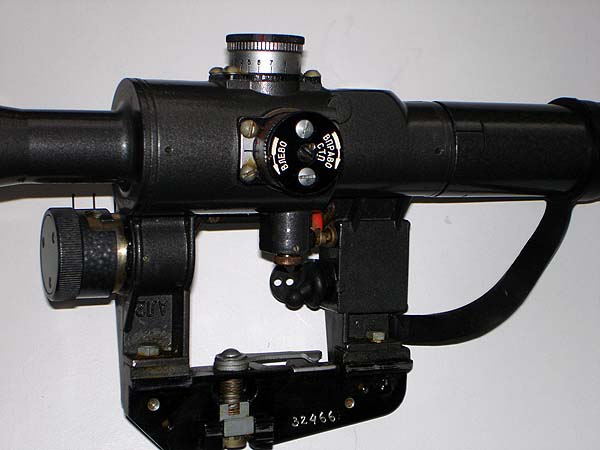
The scope is factory matched to the rifle by engraving the serial number on the scope mount.

NPZ no longer includes the infra-red detector on their military scopes because so few opposing forces use IR illumination for their night vision. Note the blank disk where the circular IR switch would normally be.
The PSO-1M2 provided with the US imported Tiger is unique in that it is made by Zenit-Belomo in Belarus but is not designated a POSP. It has the military range-finding reticle calibrated to a man-sized target of 1.7 meters (about 5 feet 7 inches). Current military scopes are prohibited from export from Russia because they are considered regulated military goods. Belomo does not have such a restriction and exports scopes and optical sights with military reticles.
When the first batch of Russian NPZ manufactured scopes were imported to the US in the late 1990's, they had government-mandated commercial reticles which consisted of either a standard "German #1" T reticle cross hair or a width-based choke style range finder reticle used to hunt large game.
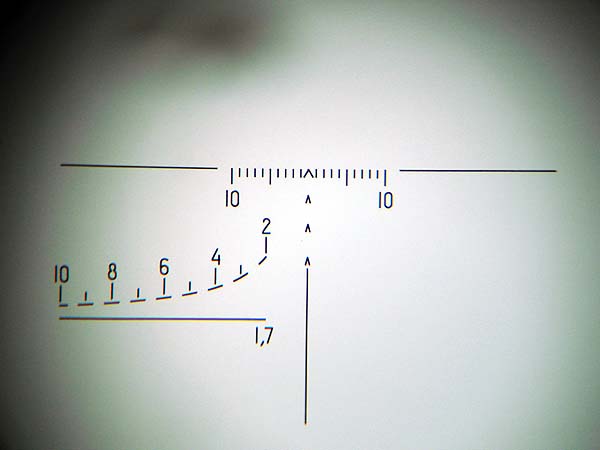
The numbers in the military range-finding reticle are etched into glass giving it crisp definition. Above as seen in daylight, below with the reticle illuminated at night. Aftermarket bulbs can be purchased in other colors such as blue, white, green, etc.
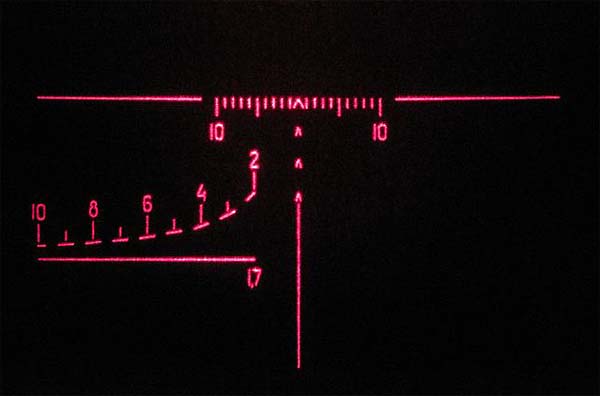
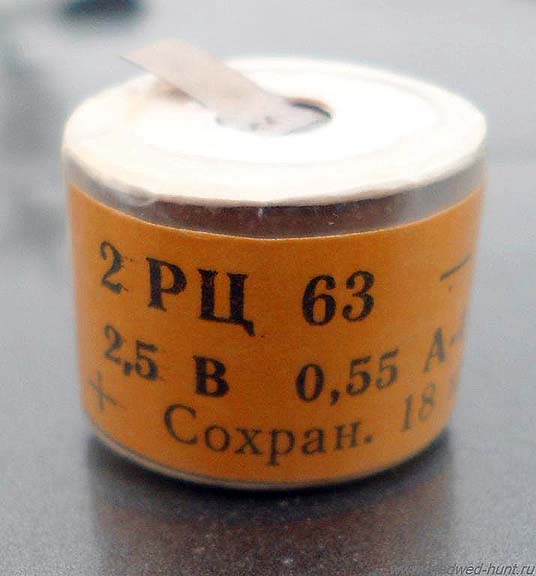
The original Russian RTS-63 battery is a 2.5 volt type that is almost impossible to find. Newer PSO scopes use either a 1.5 volt AA battery with an adapter (and matching 1.5 volt АГИ-18 LED bulb) or a plastic spacer that fits inside the battery compartment that allows the use of two common 1.5v Duracell D357/D303 button cell batteries along with a 3 volt LED bulb.
For a brief time there was a PSO-1C sight produced that used a 1.5 volt bulb but had a resistor so the original 2.5 or 3 volt battery could be used safely. The bulb was standardized soon after to 1.5 volts so the C designation was discontinued.


Russian older 2.5 volt light bulb.
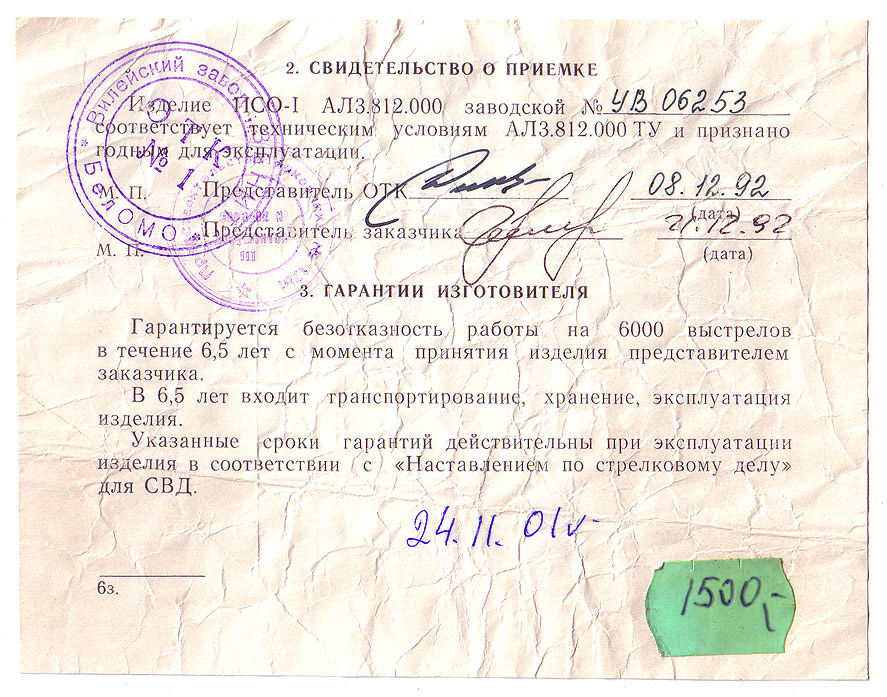
The PSO-1 was usually issued with a manual that included a certificate stating that the optic is guaranteed to function up to a certain number of years. This example above is from the Zenit-Belomo factory and states their PSO-1 scopes are guaranteed for 6000 rounds and/or six and a half years if the SVD is used in accordance with the methods described in its owners manual. This DOES NOT mean the scope only lasts for 6000 shots, it is just guaranteed to function for that long and may need servicing after that period.
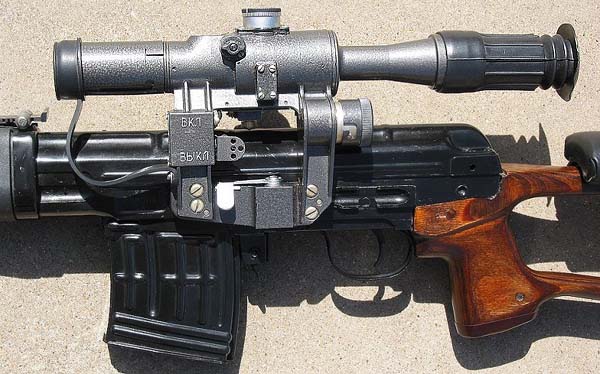
Early Russian military PSO-1 scope on a Chinese NDM-86. This scope still features the infra-red detector. The IR switch can be seen on the side of the scope just in front of the elevation turret.
At the time of its introduction in 1963, the PSO-1 scope was arguably the most sophisticated sniper scope ever designed. Adjusting the turrets by one click equals movement of the reticle by 5 cm for every 100 meters to the target.
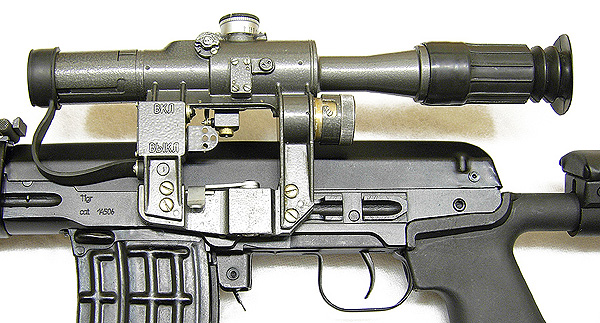
This military PSO-1 scope is mounted on an Izhmash Tigr rifle in 7.62x54r. The scope sits high enough on the rifle to allow the use of the iron sights without having to remove the scope from the rifle.
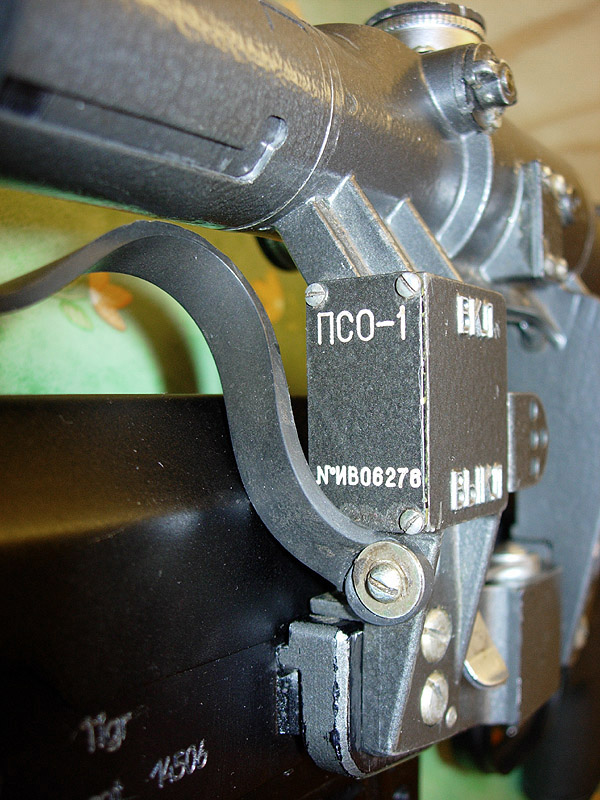
Soviet era PSO-1 made in Belarus on a Russian Tigr rifle who's owner lives in Finland.

Another variation of the PSO-1 scope possibly used in East Germany.

Not much is known about this version. It appears to have the infra-red detector and has an illuminated reticle powered by an AA 1.5 volt battery.

The writing is in Russian cyrillic and the triangle inside a triangle logo is for Техприбор (Techpribor) in Leningrad. They may be a subcontracor for NPZ.
NPZ also manufactures a 6 power scope scope with a wider 36mm objective lens opening. The model name is PO6x36.

This PO6x36 features the width-based stadiometric rangefinder reticle.
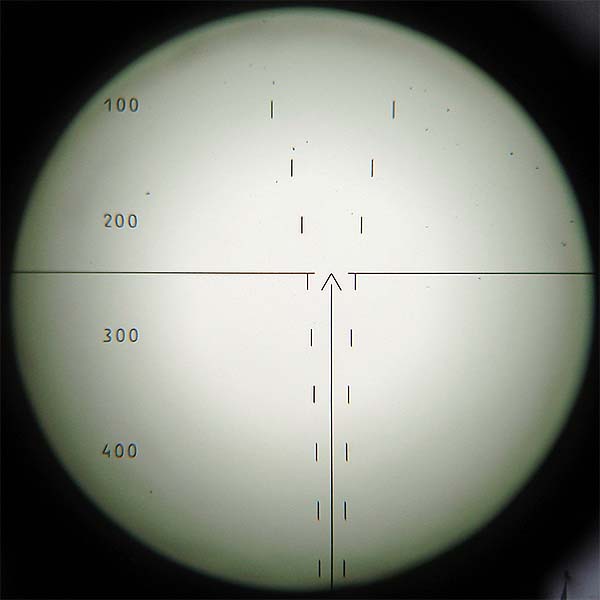
The newest PSO-1 variation deletes some features and adds others. The extendable sunshade has been replaced with a section of threaded tube that can be screwed on to the objective end of the scope. Also the scope body no longer has the section that once contained the IR filter assembly, making it thinner and lighter.
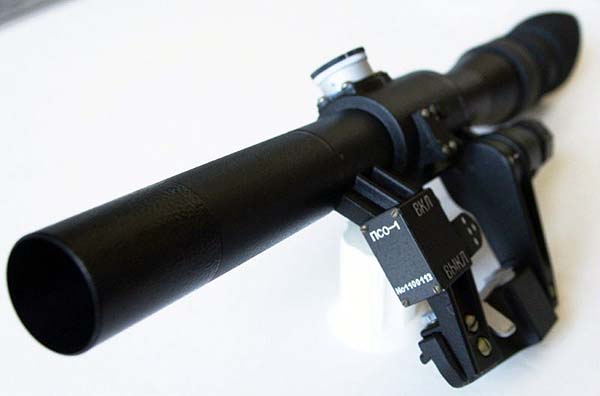

This PSO-1 scope has an interesting marking on the side of the switch housing. It is stamped with the Russian word for "training" (учебный). From a discussion on guns.ru it is said to be a normal PSO-1 scope that failed a quality control screening and is used for training purposes only.
Back to top? Hit the "home" button on your keyboard.
